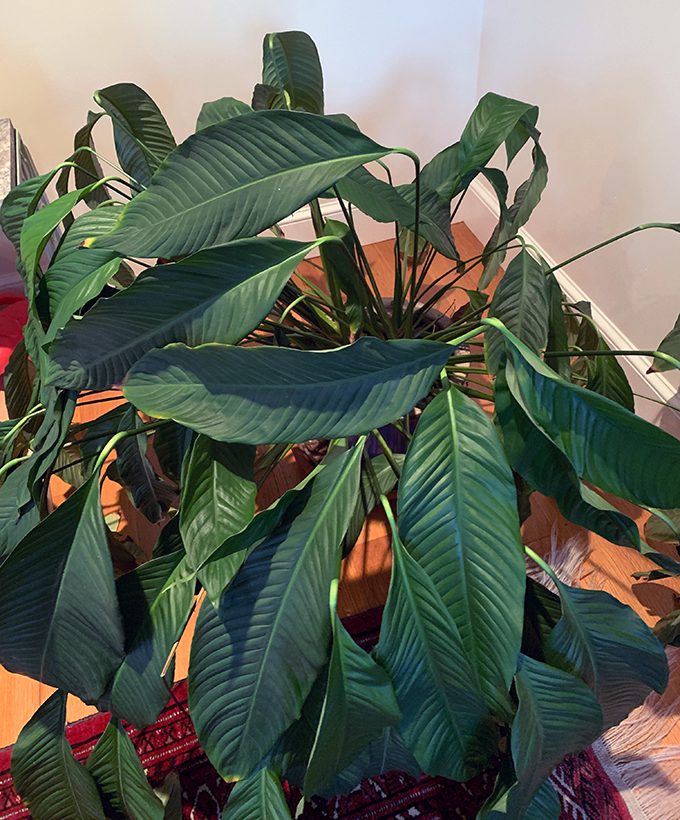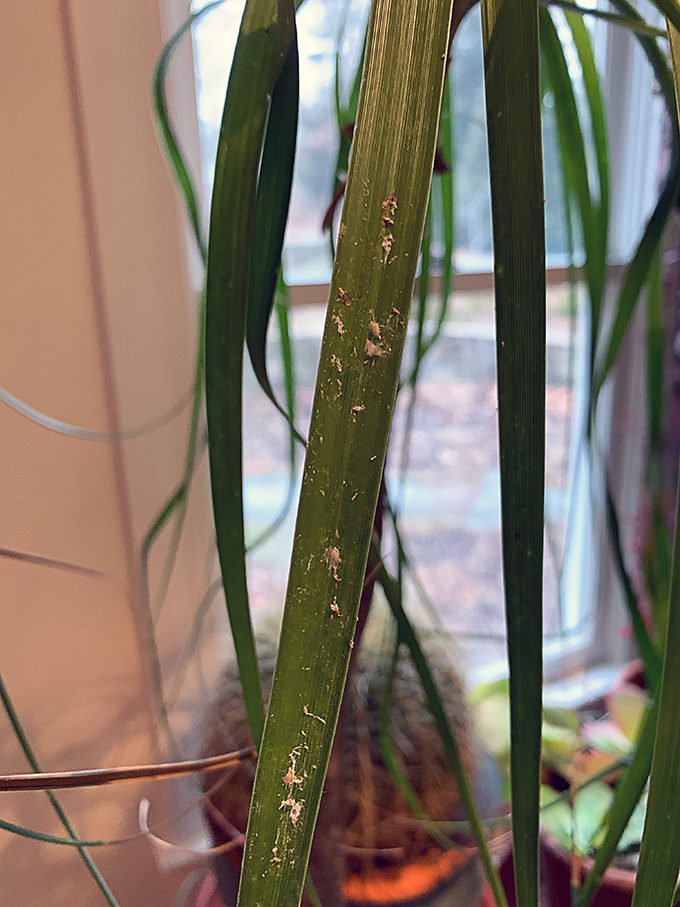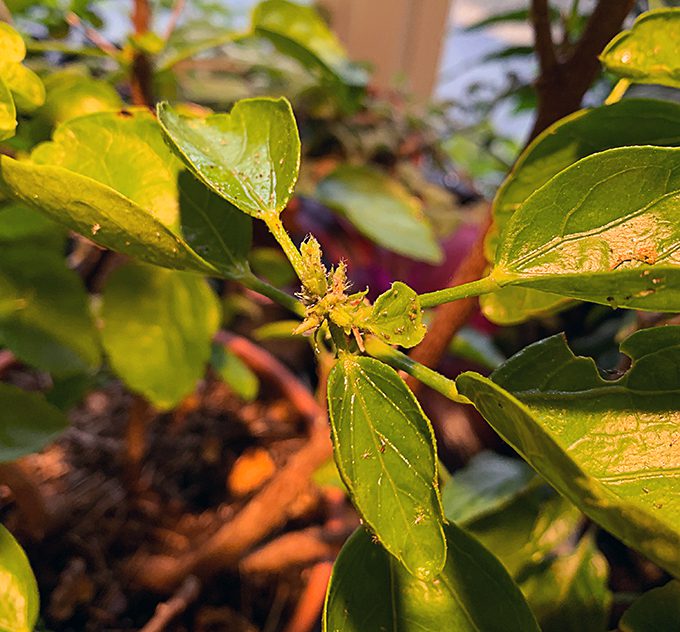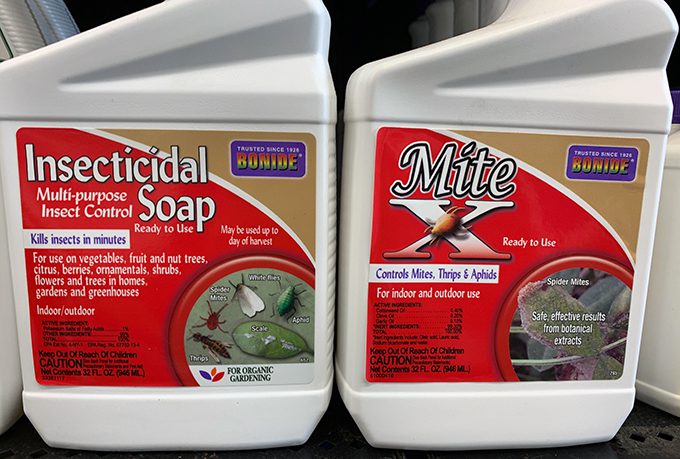Houseplant Problem Solvers
Houseplant Problem Solvers
January is the month when we start to notice problems on indoor plants. There are good reasons for this timing: the plants have been living with less than ideal light since October. The air in our centrally heated houses is dry. Plants might be crammed in together so that there isn’t good air circulation and pests can move easily from plant to plant. And finally, we have gotten accustomed to not paying such close attention (the holidays!) so the beginnings of an insect or watering issue has escaped our notice.
Here are a few things to watch for, and some solutions that will keep houseplants healthy and strong through the winter.

This droopy peace lily has a problem that’s easy to fix: it’s thirsty! Plants dry out more quickly when it’s colder outside because our heat is running constantly. If you’re watering on a once-a-week schedule normally, you might have to water more often in January and February. Check the soil in your plants every four or five days by feeling it. Water well if it’s feeling dry, even if you think “it’s not time yet.”

This plant has an infestation of mealy bug. Use a tissue or cotton ball soaked in alcohol to wipe them off of foliage. Then spray with an insecticide labeled for mealy bug. Repeat every week to ten days through the winter because new populations will continue to hatch out.

Aphids are a common problem, especially on the new growth of plants you’re over-wintering. This tropical hibiscus has aphids. To treat, carry the plant to a sink if possible and spray with a hard spritz of water to knock the insects off. After the plant dries, spray with insecticidal soap.

These are the best go-to problem solvers for insects on houseplants. Since they are least-toxic organics, they are the place to start. Most houseplant insect problems can be treated with either insecticidal soap or Bonide’s Mite X.

Yellow sticky cards trap a number of insects and can alert you to any problem before it grows out of hand. Place these near plants for insect control and monitoring.
Be on the lookout for these other problems:
- Yellow foliage. If the entire plant is turning yellow it is either a sign of poor nutrition or too much water. Be sure the pot has a drainage hole and is in a saucer that catches the overflow of water. Don’t keep the plant swampy wet…let the soil dry a bit before watering well again. Sometimes plants that need a new pot get yellow leaves because the root-congestion is preventing good drainage. Check to see if your plant is root bound and repot if you see that the roots are very congested. Don’t cover the drainage hole with anything.
- Sticky leaves. If your plant or the area around a plant is sticky, you’ve got a sucking insect problem. Usually this is whitefly, aphids, mealy bug or scale. If you treat the insects the stickiness will go away.
- Dusty, drab foliage. Houseplants gather dust on their leaves just like other surfaces in your house. In mid-winter, do your plants a favor by either wiping their leaves or putting the plant in the shower with room-temperature water to wash them off.
Next week, we’ll talk more about watering and fertilizing your houseplants. In the meantime, please visit our front greenhouse for a dose of oxygen-rich air, soothing music and expert advice from Country Garden’s staff.
Subscribe To Our Newsletter
Sign up for our weekly email about sales and events.
